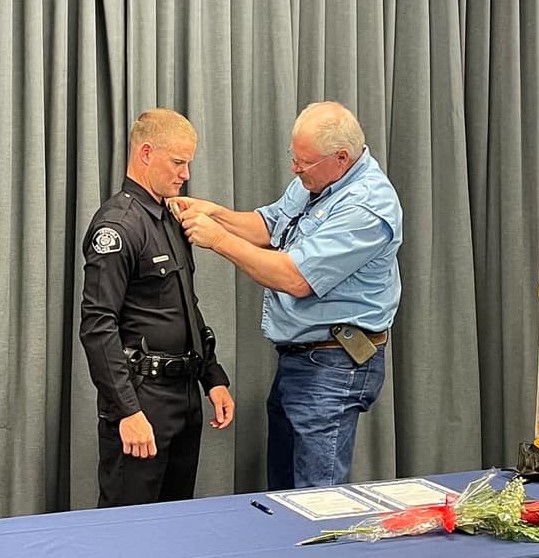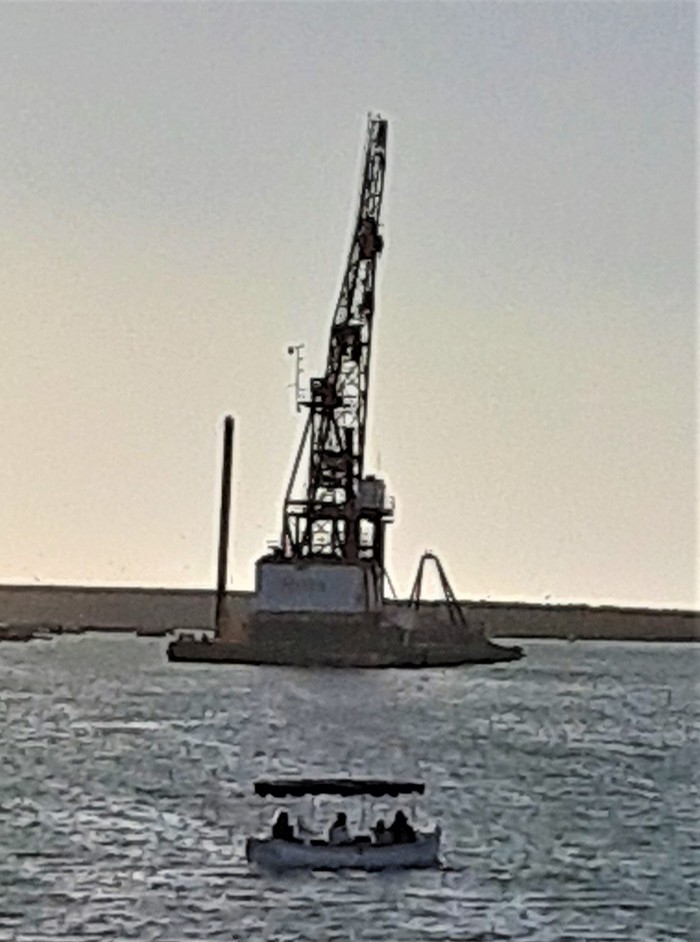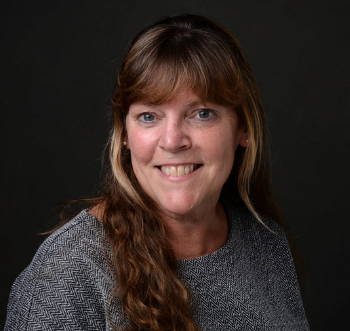by Richard Lieberman
2020 is the first election for Ventura City Districts 2,3 and 7. The city shifted from citywide to district elections in 2018 when voters elected four city Councilmembers.
Doug Halter defeated incumbent Christy Weir in District 2. Mike Johnson won an open seat in District 3 vacated by Mayor Matt LaVere, who voters selected as a Ventura County supervisor. Voters selected Joe Schroeder in District 7 to replace retiring Councilmember Cheryl Heitmann.
The Breeze spoke with all three new councilmembers individually. We asked all of them the same questions to see where they stood on current and future issues facing Ventura.
Prior to the vote, all three candidates presented their top priorities for the city to voters. Here is what each promised.
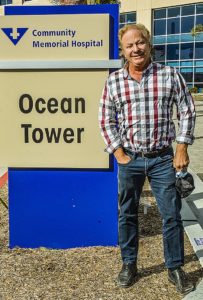 Doug Halter, District 2
Doug Halter, District 2
1) Balance the budget, 2) Review fees, processes, regulations, and technology to support our goals and encourage the private sector and government to work together, 3) Homelessness, affordable housing, and sustainable balance in housing stock, 4) Raise infrastructure standards for roads, sidewalks, medians, parks, and beaches, 5) Economic vitality, job creation, support for local businesses, 6) A plan and implementation strategy for sustainable water policy that includes viable sources, education, 7) Environment protection and education including beach management plan.
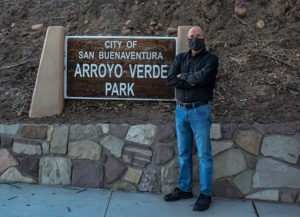 Mike Johnson, District 3
Mike Johnson, District 3
1) Post-Pandemic Economic Recovery, 2) Homelessness, 3) Housing Crisis, 4) Public Safety, 5) Water Rates, 6) Long term economic development.
 Joe Schroeder, District 7
Joe Schroeder, District 7
1) Promote health and safety, 2) Allocate resources wisely.
All three candidates promised to deliver economic vitality during their term as councilmembers. Improving the economy, however, is not within the City Councils jurisdiction. Councilmembers do not control which businesses move to Ventura. They also do not have any control to determine which companies should expand. However, they can make it easier for businesses to start-up or expand by easing regulations and reducing approval times.
Starting our interviews first was Joe Schroeder we asked:
“What made you want to run for city council?”
“I retired June 1st this year as the CEO of Ventura County Credit Union, I had a great run there of eleven years where we did a lot of great things, I was looking forward to lowering my handicap and flattening my stomach, and travel then COVID-19 hit and then politics hit, and I really despise how polarized America is right now. It seems to me we throw the far left and the far right into Washington and Sacramento and we say they get along and out comes sausage and it is not good tasting sausage and its painful.
“What are your priorities when you take your seat?”
So, I am not a specialist on water issues, and I know that some big capital that is going to have to be spent. I need to get a lot smarter on water issues. I must protect the beach and the coastal area, so I think I should, so I think there needs to be a lot of work done on the coastal plan, make it part of the general plan.
“What would you do about the housing crisis?”
“A really big issue is that of affordable housing. The dilemma is people have a different vision of what they want their part Ventura to be, so at times you can talk to people and they say I am all for affordable housing, but it comes up in their neighborhood they are not for it. We are all going to have to give a little bit and we are going to have to work this out. Everybody needs a chance to get some affordable housing around them, but you cannot go nuts with it and build something that is twelve stories high.
“Do you have any specific plans to recover from the devastation COVID-19 19 has brought to the city?”
“I have a hypothesis that had everybody worn a mask, and social distanced and shut down things for a while and stayed with that I think we wouldn’t be having this second wave. There is not an easy solution, but I think you listen to the medical people. So now let us work with business groups let us say to them lets be creative and innovative and ask what the city can do for them. How can we help you expand your business give grants? Make it so we are not going to lose 40% of our restaurants.
“How do you intend to improve public safety and promote community policing?”
Half a dozen times over the years I have seen police intervene with someone who was a vagrant or homeless and I was so impressed with how the police handled it. So, some way we must find the right way to allocate resources to augment police. I would like to leverage social services when it comes to the homeless population.
Next, we asked Doug Halter District 2
“What made you want to run for city council?’
You know this is not the first time I have run for City Council, I ran I think two other times, and my greatest passion is Ventura and I have done everything I can as a private citizen to try and make a difference. And as I turned sixty this year, I felt that it was now or never to really give it my all. Get on the council and help set policy and set direction.
“What are your top priorities when you take your seat?”
Now that we are in districts, we must look at what your district would want and then you must look at what is in the best interest of the entire city? Well obviously, infrastructure is huge. The number one interface is walking on a sidewalk, driving on a street, speed limit issues, lack of stop signs where there should be one. So really upping the ante, upping the standards of our infrastructure. A huge priority for me is creating more certainty in our processes, because our processes are antiquated, we cannot see the forest for the trees.
“What would you do about the housing crisis?”
Currently fifty percent of our workforce lives outside of Ventura and you see it going north and south and now you are seeing it going east. So, I would want to find out where are my friends and neighbors commuting to? I want to go to those businesses and say to them, would not you want to relocate close to where your workforce is. We have plenty of opportunity and we welcome you here in Ventura.
“Do you have any specific plans to recover from the devastation COVID-19 19 has brought to the city?”
Wear a mask and distance as far as possible, try to minimize what you touch. In public I try to minimize what I touch just in case the virus is there. My life is an open book and I have worked on the AIDS epidemic for years and that is almost a forgotten pandemic and it has significantly changed my life and has taken away many of my friends at an early age
“How do you intend to improve public safety and promote community policing?”
We really must take a deep look at it how we are spending our money and what is sustainable. We need to understand what kind of economic vitality we need to support the services we desire. I do not believe in defunding the police. I believe it is more about community policing, getting people to understand it is not us against them. We need the police to be well equipped for behavioral health. It is not just about getting someone off the street. I believe in transitional shelter meaning that there is case management there to determine if there is a mental health issue, or a substance abuse issue. We have made too easy for people to be on the streets. It is in nobody’s interest to have anybody living on the streets.
Our final interview was with Mike Johnson, District 3
“What made you want to run for city council?”
I have been involved with city affairs for about ten years, and I started with my neighborhood and then got involved with the College Area Community Council and it just seemed like a natural progression. To get things done in this town I decided to step up and do it myself.
“What are your priorities when you take your seat?”
The biggest issue we are dealing with is the pandemic. I expect it is going to get a lot worse before it gets better. The city is going to have to deal with the public side of that, and the economic side of that. I am not sure how our economy is going to fare over the next two years. Especially if we see the collapse of the restaurant industry. Pandemic response would be my priority, second would-be affordable housing. We need a city-wide inclusionary housing plan which would cover rental units and for sale units. We do not have that right now.
“What would you do about the housing crisis”
We do not have a city-wide inclusionary housing plan. We need to look at the numbers and get a plan in place this year. Its going to be tricky because it is asking a lot of the community. We must face the problems of homelessness. We must increase the services in a way that makes the city better for people but also ways that we can do that while saving money. I would like to look at our Safe and Clean that operates out of the City Managers office and figure out what we can do
“Do you have any specific plans to recover from the devastation COVID-19 19 has brought to the city?”
We can build and maintain a homeless shelter because the county is paying for half of it. At the same time, we need to keep on looking forward with the expectation that the county is going to step in and provide half the cost of everything. We need to work with the county as best we can to ensure across the county that people can get the services, they need without ever coming to Ventura. I would like to see more available beds in the shelter. In a functional sense is if the people in the shelter on Knoll Drive if there is a place for them to move into. I would like to see affordable housing on an exceptionally low level. We do not have enough of that kind of housing. It needs to be a pipeline not a dormitory. There needs to be a path to for them to get housing.
